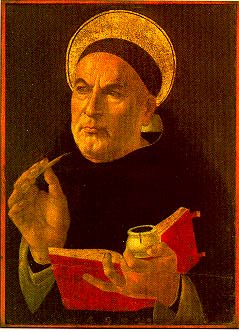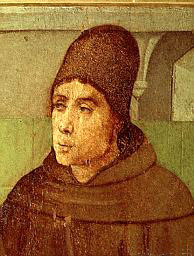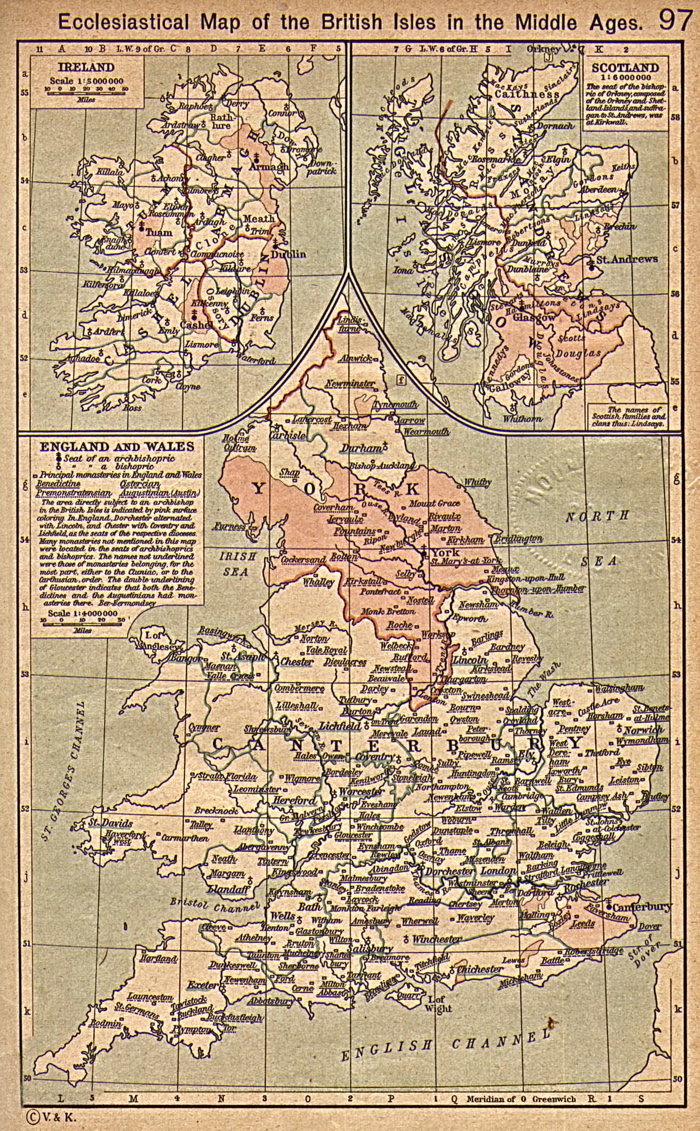The Life of Thomas Aquinas
(c. 1225-1274)
Thomas Aquinas lived in the thirteenth century and is most famous for his defenses and explanations of Christian philosophy.

St. Thomas Aquinas
Aquinas was born to Landulf and Theodora of Aquino between A.D. 1225 and 1227. At five, he was sent to the Benedictine monastery of Monte Cassino for his early education, leading to a lifelong interest in philosophy and religion. Around 1236, he traveled to the University of Naples to continue his studies. There, he studied grammar, rhetoric, logic, music, mathematics, geometry, and astronomy. Eventually he surpassed his teachers in these subjects; in the early 1240s, he decided to enter the Dominican order, a group of Catholic preachers who were actively teaching and debating philosophy, experimental sciences, and alchemy.
Not long after joining the Dominicans, Aquinas’ mother came to visit him. The order worried that she would take him away, and so they ordered him to travel to Rome. However, before he could reach his destination, he was seized by his brothers and brought to the castle of San Giovanni. The family held him there against his will for about two years, during which time they tried to force, persuade, and tempt him into abandoning his new career. They finally gave up and allowed Aquinas to join the church around 1244.
Not long afterwards, the Dominicans sent Aquinas to study under Albertus Magnus in Cologne. From there, the two traveled to Paris, where they studied and taught together for several years. In 1248, they returned to Cologne. Aquinas continued his studies here and became a devotee of the Aristotelian method. It was during this time in his life that Aquinas was promoted to the priesthood. In 1252, Aquinas once again went to Paris, this time to become a Doctor of Theology. In 1257, after struggling with closed schools, striking teachers, and anti-mendicant attacks, Aquinas finally received his degree. He spent the next decade traveling Europe, writing about, teaching, explaining, and defending Christianity. He became so well recognized that in 1265 he was appointed to Archbishop of Naples by Pope Clement IV, but Aquinas loved his current vocation so much that he begged to be let off the hook. In the end, the Pope excused Aquinas from the appointment.
Aquinas instead spent his years continuing to write and preach, creating numerous philosophical and religious works that are still influential today. He became not only well-respected, but famous and deeply honored during his lifetime. In 1273, Aquinas retired from writing. But his opinion was still highly regarded, so much so that in 1274, he was ordered to attend the Council of Lyons by Pope Gregory X. Aquinas set off for the meeting dutifully, but he was not in good health. Aquinas became fatally ill on his journey and was brought to the castle of his niece. From there he was brought to the Cistercian monastery of Fossa Nuova, where he died on March 7, 1274.
Thomas Aquinas was made a saint by Pope John XXII in 1323, but it wasn’t until 1369 that Aquinas’ remains were returned by the Fossa Nuova monks to a Dominican church in Toulouse. Aquinas’ shrine there was destroyed during the French Revolution; his body now resides in the Church of St. Sernin.

Mediaeval Commerce (Europe),
depicting the lands traveled by Thomas Aquinas.
The Life of John Duns Scotus
(c. 1265-1308)
John Duns Scotus lived in the thirteenth and fourteenth centuries and is most famous for his defense of the Immaculate Conception of the Virgin Mary.

Bl. John Duns Scotus
John Duns Scotus was born in the small Scottish town of Duns, just north of the English border, between 1265 and 1266. His real name was just John Duns; he was later given the nickname “Scotus,” identifying him as Scots. Unfortunately, not much about his life is actually known. Scholars have only a few concrete dates from letters and records of the time; all other dates have been inferred from these few facts.
Duns Scotus was a member of the Franciscan order, which, like the Dominican order, emphasized learning and intellectual activity. He probably entered the order at a young age; we know from records that Duns Scotus was ordained a priest by the Bishop of Lincoln on March 17, 1291. It is likely that he spent some time studying at Oxford, Cambridge, or Paris before becoming a priest.
It is certain that Duns Scotus was in Oxford in 1300. From 1300 to 1301, he lectured there on Peter Lombard’s Sentences. (Judging by these dates, scholars have inferred that he began his studies – which traditionally took thirteen years – in 1288.) We know that in the summer of 1303, he was forced to leave France, along with scores of other religious figures who sided with the Pope in an argument between King Philip of France and Pope Boniface VIII. Duns Scotus was able to take up his lectures again in 1304, and in November of that year, he was declared regent master in theology at Paris. He gave disputations and lectured in Cologne from 1307 to 1308, but his career was cut short; he died on November 8, 1308, around the age of forty-two.

Ecclesiastical Map of the British Isles During the Middle Ages,
depicting the homeland of John Duns Scotus.
REFERENCES:
Copleston, F. C. (1972). A history of medieval philosophy. New York: Harper & Row Publishers.
Cross, R. (1999). Duns Scotus. New York: Oxford University Press.
Kennedy, D. J. (1912). St. Thomas Aquinas. Retrieved October 23, 2007, from http://www.newadvent.org/cathen/14663b.htm
Kretzmann, N., & Stump, E. (Eds.). (1993). The Cambridge companion to Aquinas. New York: Cambridge University Press.
Magee, J. (1996). Thomistic philosophy: The enduring thought of saint Thomas Aquinas. Retrieved October 23, 2007, from http://www.aquinasonline.com/
McInerny, R. M. (1977). St. Thomas Aquinas. Boston: G. K. Hall & Co.
Significant Scots: John De Duns. (n.d.) Retrieved October 19, 2007, from http://www.electricscotland.com/history/other/duns_john.htm
Weisheipl, J. A. (1974). Friar Thomas D'Aquino: His life, thought, and work. Garden City, NY: Doubleday & Company, Inc.
Image of Mediaeval Commerce (Europe) found at:
http://www.northvegr.org/lore/maps/023.php
Image of Ecclesiastical Map of the British Isles During the Middle Ages found at:
Site Last Updated: 11/01/2007